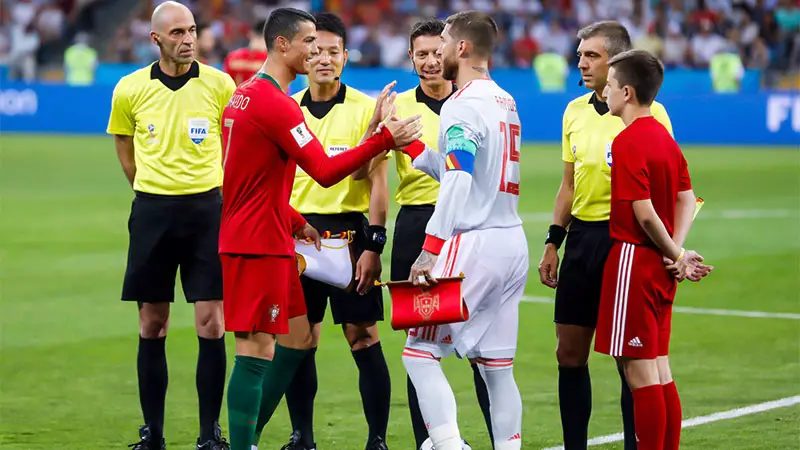When it comes to soccer matches, the coin toss is a crucial moment that sets the tone for the game ahead. Understanding the rules and procedures of the soccer coin toss can provide teams with a strategic advantage right from the start.
In the world of soccer, where every decision matters, knowing the ins and outs of the coin toss can make a difference in the outcome of the match.
From determining which team kicks off to choosing sides or ends, the coin toss in soccer follows specific guidelines that ensure fairness and sportsmanship on the field.
This simple yet significant ritual can impact the dynamics of the game and influence the players’ mindset as they prepare to showcase their skills.
By delving into the nuances of soccer coin toss rules, teams can approach this initial moment with confidence and clarity, setting the stage for an exciting and competitive match.
Pre-Coin Toss Preparations
Before the coin toss in soccer matches, certain preparations ensure a smooth and fair process, promoting sportsmanship and setting the tone for the game.
Role of the Referee
The referee plays a crucial role in the coin toss by overseeing the procedure to guarantee its accuracy and fairness. Their responsibilities include ensuring that the coin is flipped properly, making a clear call based on the result, and communicating the outcome to the team captains.
Responsibilities of Team Captains
Team captains hold vital responsibilities during the coin toss as they represent their teams in this important pre-match ritual.
Their duties involve nominating a player to call the toss, respecting the referee’s instructions, and effectively communicating the team’s decision regarding kick-off or choice of ends.
Coin Toss Procedures Explained
In soccer matches, the coin toss is a crucial event that sets the stage for the game ahead. Teams must pay attention to the coin toss procedures to gain a strategic advantage. Here’s how the process unfolds:
Choosing the Coin Type
When it comes to choosing the coin type for the toss, the standard practice is to use a regular coin with two distinct sides.
The choice of coin is important as it should be easily identifiable when flipping in the air. Teams typically designate one side of the coin as representing their preference during the toss.
Tossing Techniques
During the coin toss, the referee tosses the coin in the air to determine which team gets to make the initial decision. It is crucial for the toss to be fair and unbiased.
The tossing technique involves ensuring the coin reaches an appropriate height and is allowed to rotate freely to avoid any manipulation that could influence the outcome.
Decision-Making: Kick-off or Field Side
After the coin lands, the team that wins the toss gets to decide between kicking off or choosing which side of the field to defend. This decision can have strategic implications for the rest of the game.
Teams must consider factors such as weather conditions, field orientation, and tactical preferences when making this crucial choice.
By understanding the nuances of the coin toss procedures, teams can approach this pre-match ritual with confidence, setting the tone for a competitive and exciting game.
Immediately After the Coin Toss
Immediately after the coin toss in a soccer match, a few key actions and decisions take place:
Actions Post-Toss
Immediately after the coin toss, the team that wins the toss typically has the choice to decide whether to start the game with the ball or choose the side of the field. This decision can impact the initial momentum of the match and set the tone for the team’s strategy.
Coordinating with Team Members
Following the coin toss, team captains quickly relay the chosen option to their teammates to ensure everyone is aligned with the decision. This coordination is crucial in implementing the chosen strategy effectively and getting the team ready for the kickoff.
Clear communication and swift action can help set the team up for a strong start in the upcoming match.
Common Misconceptions About Soccer Coin Toss Rules
Here are some common misconceptions about soccer coin toss rules that often need clarification:
Myth: The team that wins the coin toss gets to choose whether to start with the ball.
Reality: In soccer, winning the coin toss allows the team to choose which goal to attack first, not whether to start with the ball. The opposing team then decides which side of the field to kick from, often opting to kick off.
Myth: The coin toss determines the team that kicks off the match.
Reality: While the coin toss determines which team chooses their preferred end of the field for the first half, it does not directly dictate which team kicks off. The team that does not choose the end typically kicks off.
Question: Does the team winning the coin toss automatically get the ball first?
Answer: No, winning the coin toss primarily grants the privilege of selecting which goal to attack in the first half. The other team typically starts with the ball.
Question: Can the team that loses the coin toss still have an advantage?
Answer: Yes, the team that loses the toss often chooses the direction of the kickoff. This choice can provide a strategic advantage, such as adjusting for wind conditions or setting an immediate attacking tempo.
Frequently Asked Questions
What is the strategic importance of a soccer coin toss?
The coin toss in soccer determines which team gets to choose whether to start with the ball or select the field side. This decision impacts the game’s momentum and sets the tone for strategic planning by team captains and players.
Winning the coin toss allows the choice of which goal to attack first, influencing the initial dynamics of the match.
Who participates in a soccer coin toss?
During a soccer coin toss, the match referee and the two team captains come together at the center of the field. One of the team captains selects heads or tails before the referee flips the coin.
Following FIFA Rules, the winning team decides which goal to attack in the first half of the game.
Conclusion
Soccer coin toss rules are vital for setting the tone in competitive matches as they determine crucial aspects of the game. Winning the toss grants the team the choice of which goal to attack first, influencing the initial dynamics.
Contrary to common beliefs, winning the toss doesn’t guarantee possession but allows the selection of the preferred goal. The losing team, while not getting possession, can shape game tactics by choosing the kickoff direction from the start.
Understanding and navigating these nuances can empower teams to strategically leverage the coin toss for an enhanced gameplay experience.
The coin toss in soccer is more than just a random event. It directly impacts the starting dynamics of the game by allowing the winning team to choose which goal to attack first.
This choice influences the initial flow of the match and can be a strategic advantage when utilized effectively.








Brice Petersen